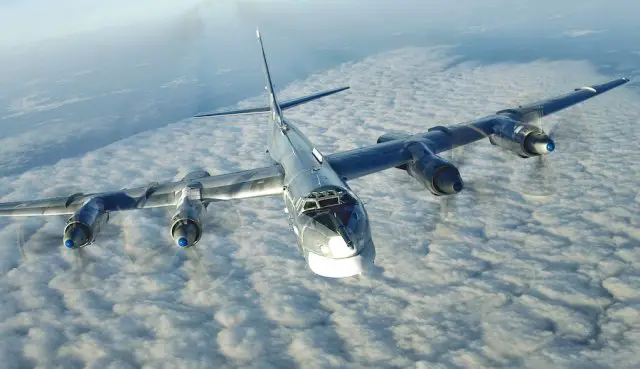| a | |||
|
|
|||
|
World Aviation Defense & Security News - Russia
|
|||
|
|
|||
|
Russia activates new strategic bomber air division in Eastern Military District
|
|||
|
Russia is finalizing the activation of a second heavy bomber air division to be stationed in the east of the country, according to the Izvestia daily. The mission of the new large unit operating Tupolev Tu-95MS (NATO reporting name: Bear-H) strategic and Tu-22M3 (Backfire-C) long-range cruise missile-carrying bombers will include patrolling the Pacific in the vicinity of Japan, Hawaii and Guam.
|
|||
|
|
|||
 A RuAF Tu-95MS strategic bomber A RuAF Tu-95MS strategic bomber |
|||
|
|
|||
|
In expert opinion, the activation of the new air division will highlight Russia’s earnest eastward aspiration to the countries in the Pacific and the United States.
The division has almost been formed, says a Defense Ministry official close to the matter. The unit consists of several long-range bomber squadrons stationed in the Eastern and Central Military Districts. The Far Eastern Heavy Bomber Air Division shall be the second of the kind in the Russia Aerospace Force (RusAF). Last year, the RusAF formed the 22nd Heavy Bomber Air Division on the Tu-160 (Blackjack) and Tu-95MS strategic and Tu-22M3 long-range bombers stationed at Mozdok, Engels and Shaikovka AFBs. According to the Svobodnaya Pressa, the new division is being formed on the basis of the 6953rd Guards Red Banner Air Base of Sevastopol and Berlin. It will comprise several dozen strategic and long-range bombers to be stationed at Belaya AFB and Ukrainka AFB in the Irkutsk and Amur regions respectively. The 182nd Heavy Bomber Air Division had been garrisoned in the Russian Far East before 2008. It was made up of two Tu-95Ms regiments and two Tu-22M3 ones. In the course of then-Defense Minister Anatoly Serdyukov’s military reform, the division was split into two air bases that later were merged into the single 6953rd Air Base. Afterward, it took over the Tu-22M3s released by the Pacific Fleet’s air arm. In the Soviet times, the primary mission of the Far Eastern heavy bomber units was to strike U.S. military bases in Japan, on Guam - the then main U.S. strategic bomber base in the Pacific - and the US Navy’s key facilities in Hawaii, expert Dmitry Boltenkov said. In times of peace, Soviet bombers routinely patrolled those areas, keeping an eye on the probable adversary’s activities. The patrols were discontinued in the 1990s and early 2000s, though. Judging by foreign media reports on Russian bombers spotted in the Pacific, however, the regular patrolling of the Japan-Guam-Hawaii triangle has resumed. Since 2014, Tu-95MS aircraft have showed up near Japan repeatedly, and U.S. and Japanese fighters have been scrambled several times to intercept them. In November 2015, several Tu-95MS flew around Guam several times without intruding into US airspace (officially, the island is not a state, but it has belonged to the US as an unincorporated and organized territory since 1898). According to expert Anton Tsvetov, as Russia strives for emphasizing the eastern aspect of its foreign policies, it is bound to need the relevant defense for its Far Eastern border. Russia’s military buildup in the Pacific demonstrates its earnest aspiration in the Far East. Russia’s economic presence in Asia is far from what it may really be, and, probably, Moscow deems it necessary to increase its military footprint in the region for this reason. There is a good reason for it - the development of a regional security system has always been a key element of Russia’s participation in Asian multilateral organizations, according to the Izvestia daily. |
|||
|
|
|||
|
© Copyright 2015 TASS. All rights reserved. This material may not be published, broadcast, rewritten or redistributed.
|
|||
,
















